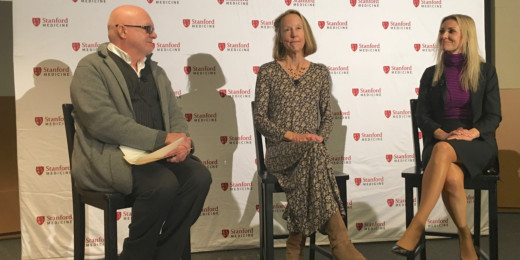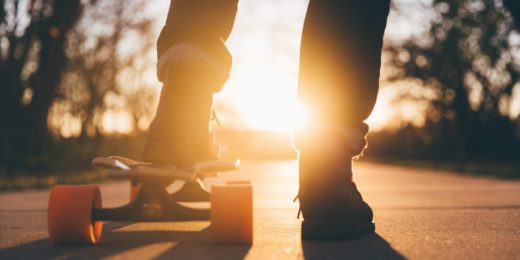Suicide is not an easy conversation. It's a subject fraught with taboos, fear and especially, sadness. It's particularly shocking when you hear of someone having died by suicide. With a number of celebrity suicides in recent years -- Kate Spade, Anthony Bourdain, Robin Williams -- it might make one think suicide is widespread.
Yet, it isn't, as Stanford psychologist and suicidologist Rebecca Bernert, PhD, tells me in this 1:2:1 conversation, although the numbers can be confusing.
The numbers in the U.S. range anywhere from 10 to 13 deaths per 100,000 individuals... which is a relatively low occurrence across the general population... Although we can talk about the numbers very easily, even one loss of a loved one is unthinkable.
Although it's "rare," suicide has some particularly stark and dark statistics: among young adults, it's the second leading cause of death. Across all ages, it's in the top 10 as a leading cause of death. And, Bernert emphasizes, in terms of magnitude as a public health problem in the U.S, "it represents 57% of all violent deaths, outnumbering all homicide and war-related deaths, and recently surpassing motor vehicle accident fatalities."
Although a variety of factors increase risk -- depression, sleep disturbances, drugs and alcohol -- suicide is preventable and effective interventions do exist, Bernert told me.
Her passion to solve the riddle of suicide is clear. "I've committed my life to this field... amid all of these different problems, challenges, there are critical opportunities for intervention. We've shown we can prevent death by suicide." She sees unique promise in the Silicon Valley where technological tools may advance prevention, triage and treatment.
Two approaches to preventing suicide are enhancing the availability of mental health treatment and limiting access to lethal means. "We can prevent loss of life on a large scale by restricting access to means, whether you're talking about carbon monoxide emission control shutoffs, gun storage safety, barriers at hotspots [such as a bridge]... advance screening in emergency departments," she said.
Physicians can also help prevent suicide by screening their patients for suicidal thoughts, risk factors, and by asking about the availability of guns. Yet Bernert found in a recent survey that less than a fifth of pediatric residency leaders felt their programs offered adequate training. When asked about the impact of the findings and why such training should be prioritized, Bernert said, "This is mortality prevention. It couldn't represent a higher priority."
She explained in the podcast:
If we look at areas of innovation, whether you're looking at treatment, at large-scale, real-time surveillance systems using technology innovation, or machine learning and artificial intelligence... there are fundamental opportunities for life-saving initiatives that can really impact suicide on a large scale. That gives me a great deal of hope.
Thankfully, one issue in the San Francisco Bay Area nearly settled after years of delays, barrier restrictions are finally being constructed on one of San Francisco's suicide hotspots, the Golden Gate Bridge. Since its opening in 1937, approximately 1,700 people have died by suicide at the iconic structure. Bernert has long advocated for a deterrent there as a board member of the Bridge Rail Foundation and after years of resistance, fencing has begun.
What we know about means restriction is that it works. If you put time and space between thoughts regarding suicide ideation... and access to the means, you save lives.
If you or a loved one is in crisis, help is available by calling the National Suicide Prevention Lifeline at (800) 273-TALK. Help is also available from anywhere in the United States via Crisis Text Line (text HOME to 741741) or the National Suicide Prevention Lifeline at (800) 273-8255. All services are free, confidential and available 24 hours a day, seven days a week.
Photo by Steven Coffey






